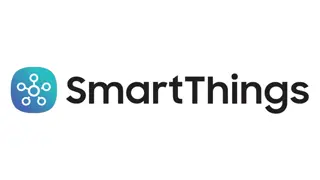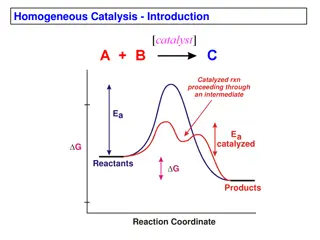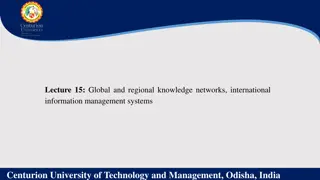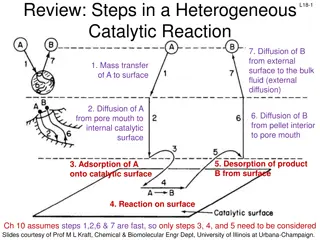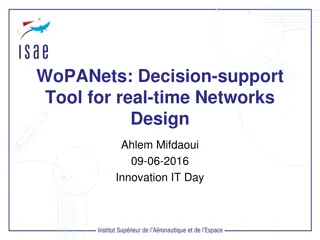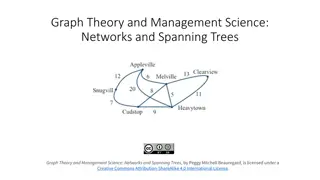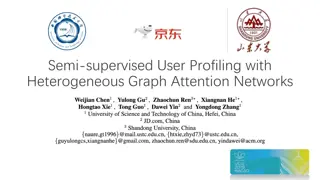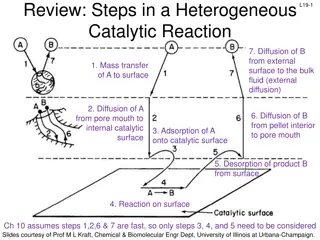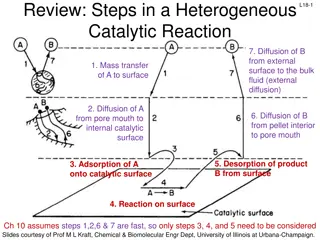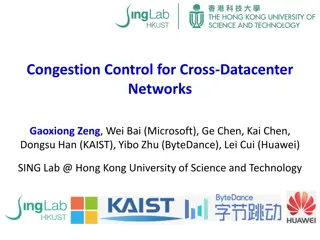Adaptive Tree-based Convergecast Protocol
Adaptive tree-based protocol for managing overlay networks in heterogeneous networks. It proposes improvements to the existing Tree-Based Convergecast Routing (TBCR) protocol by considering additional parameters such as RTT, power consumption, link stability, and link mobility to optimize routing de
32 views • 12 slides
Computational Physics (Lecture 18)
Neural networks explained with the example of feedforward vs. recurrent networks. Feedforward networks propagate data, while recurrent models allow loops for cascade effects. Recurrent networks are less influential but closer to the brain's function. Introduction to handwritten digit classification
0 views • 55 slides
Evolution and Potential of 5G Technology
Explore the evolving landscape of 5G technology, from enhanced mobile broadband to groundbreaking use cases and standalone networks. Learn how supportive regulations and spectrum allocation are vital for unlocking 5G's full potential. Discover the transformative impact of Standalone 5G networks on i
8 views • 10 slides
Understanding Computer Networks: Types and Characteristics
In the realm of computer networks, nodes share resources through digital telecommunications networks. These networks enable lightning-fast data exchange and boast attributes like speed, accuracy, diligence, versatility, and vast storage capabilities. Additionally, various types of networks exist tod
9 views • 12 slides
Graph Neural Networks
Graph Neural Networks (GNNs) are a versatile form of neural networks that encompass various network architectures like NNs, CNNs, and RNNs, as well as unsupervised learning models such as RBM and DBNs. They find applications in diverse fields such as object detection, machine translation, and drug d
2 views • 48 slides
Understanding Artificial Neural Networks From Scratch
Learn how to build artificial neural networks from scratch, focusing on multi-level feedforward networks like multi-level perceptrons. Discover how neural networks function, including training large networks in parallel and distributed systems, and grasp concepts such as learning non-linear function
1 views • 33 slides
Understanding Back-Propagation Algorithm in Neural Networks
Artificial Neural Networks aim to mimic brain processing. Back-propagation is a key method to train these networks, optimizing weights to minimize loss. Multi-layer networks enable learning complex patterns by creating internal representations. Historical background traces the development from early
1 views • 24 slides
Exploring Samsung SmartThings Hub and Zigbee/Zwave Networks
The Samsung SmartThings hub is a versatile device connecting Zigbee and Zwave networks, offering secure access to SkySpark via HTTPS. Zigbee and Zwave networks operate on distinct frequencies, enabling efficient communication without interference with WiFi. These networks support various devices for
0 views • 19 slides
Understanding Wireless Wide Area Networks (WWAN) and Cellular Network Principles
Wireless Wide Area Networks (WWAN) utilize cellular network technology like GSM to facilitate seamless communication for mobile users by creating cells in a geographic service area. Cellular networks are structured with backbone networks, base stations, and mobile stations, allowing for growth and c
2 views • 17 slides
Understanding Homogeneous Catalysis and Its Advantages
Homogeneous catalysis involves catalyzed reactions proceeding through an intermediate with lower activation energy. This method offers advantages such as selectivity, activity, ease of study, and modification but can be sensitive to deactivation. Comparing with heterogeneous catalysts prevalent in i
1 views • 14 slides
Understanding Interconnection Networks in Multiprocessor Systems
Interconnection networks are essential in multiprocessor systems, linking processing elements, memory modules, and I/O units. They enable data exchange between processors and memory units, determining system performance. Fully connected interconnection networks offer high reliability but require ext
1 views • 19 slides
Understanding Computer Networks in BCA VI Semester
Computer networks are vital for sharing resources, exchanging files, and enabling electronic communications. This content explores the basics of computer networks, the components involved, advantages like file sharing and resource sharing, and different network computing models such as centralized a
1 views • 96 slides
Understanding Computer Communication Networks at Anjuman College
This course focuses on computer communication networks at Anjuman College of Engineering and Technology in Tirupati, covering topics such as basic concepts, network layers, IP addressing, hardware aspects, LAN standards, security, and administration. Students will learn about theoretical and practic
0 views • 72 slides
Introduction to Neural Networks in IBM SPSS Modeler 14.2
This presentation provides an introduction to neural networks in IBM SPSS Modeler 14.2. It covers the concepts of directed data mining using neural networks, the structure of neural networks, terms associated with neural networks, and the process of inputs and outputs in neural network models. The d
0 views • 18 slides
Enhancing Agriculture Through Global Knowledge Networks and Information Management Systems
Global and regional knowledge networks play a vital role in agriculture by facilitating information sharing, collaboration, capacity building, and coordination among stakeholders. These networks improve access to information, foster collaboration, enhance capacity building, and strengthen coordinati
0 views • 5 slides
Understanding Heterogeneous Catalytic Reactions: Key Steps Explained
In a heterogeneous catalytic reaction, various important steps occur, including diffusion of reactants, adsorption onto the catalyst surface, surface reactions, and desorption of products. Different mechanisms like single-site, dual-site, and Eley-Rideal mechanisms are involved in the surface reacti
0 views • 17 slides
Understanding Router Routing Tables in Computer Networks
Router routing tables are crucial for directing packets to their destination networks. These tables contain information on directly connected and remote networks, as well as default routes. Routers use this information to determine the best path for packet forwarding based on network/next hop associ
0 views • 48 slides
P-Rank: A Comprehensive Structural Similarity Measure over Information Networks
Analyzing the concept of structural similarity within Information Networks (INs), the study introduces P-Rank as a more advanced alternative to SimRank. By addressing the limitations of SimRank and offering a more efficient computational approach, P-Rank aims to provide a comprehensive measure of si
0 views • 17 slides
Understanding Advanced Classifiers and Neural Networks
This content explores the concept of advanced classifiers like Neural Networks which compose complex relationships through combining perceptrons. It delves into the workings of the classic perceptron and how modern neural networks use more complex decision functions. The visuals provided offer a cle
0 views • 26 slides
Dynamic Core Boosting for Heterogeneous Computing
Exploring the challenges of workload heterogeneity in parallel programming, focusing on the impact of asymmetric hardware on performance and synchronization. Insights on modeling workload imbalance and boosting critical paths for efficient computation in heterogeneous multicores.
0 views • 22 slides
Enhancing Real-Time Network Design with WoPANets Decision-Support Tool
Addressing the increasing complexity of real-time networks, WoPANets offers a decision-support tool for designing networks with mixed-criticality data delivery, multi-hop communication, and heterogeneous architectures. By focusing on accurate timing verification and system-level performance analysis
0 views • 15 slides
Understanding Relational Bayesian Networks in Statistical Inference
Relational Bayesian networks play a crucial role in predicting ground facts and frequencies in complex relational data. Through first-order and ground probabilities, these networks provide insights into individual cases and categories. Learning Bayesian networks for such data involves exploring diff
0 views • 46 slides
Understanding Overlay Networks and Distributed Hash Tables
Overlay networks are logical networks built on top of lower-layer networks, allowing for efficient data lookup and reliable communication. They come in unstructured and structured forms, with examples like Gnutella and BitTorrent. Distributed Hash Tables (DHTs) are used in real-world applications li
0 views • 45 slides
Understanding Networks: An Introduction to the World of Connections
Networks define the structure of interactions between agents, portraying relationships as ties or links. Various examples such as the 9/11 terrorists network, international trade network, biological networks, and historical marriage alliances in Florence illustrate the power dynamics within differen
0 views • 46 slides
Understanding Graph Theory and Networks: Concepts and Applications
Explore the concepts of graph theory and management science, focusing on networks, spanning trees, and their practical applications. Learn about the difference between a snowplow tracing streets, a traveler visiting cities, and connecting towns with cables. Discover how networks like Facebook evolve
0 views • 15 slides
Parallel Prefix Networks in Divide-and-Conquer Algorithms
Explore the construction and comparisons of various parallel prefix networks in divide-and-conquer algorithms, such as Ladner-Fischer, Brent-Kung, and Kogge-Stone. These networks optimize computation efficiency through parallel processing, showcasing different levels of latency, cell complexity, and
1 views • 21 slides
Understanding Rate Expressions in Heterogeneous Systems
In heterogeneous systems, the rate expression involves mass transfer terms alongside chemical kinetics terms due to the presence of multiple phases. Different types of heterogeneous systems have varying mass transfer complexities, making a general rate expression challenging to define. Examples such
0 views • 29 slides
Optimizing Data Center Costs with Heterogeneous-Reliability Memory
Reducing data center costs while meeting availability targets is the focus of this study on memory error vulnerabilities. By employing a heterogeneous-reliability memory approach, storing error-tolerant data in less reliable memory and error-vulnerable data in more reliable memory, significant savin
0 views • 51 slides
Diverse Social Entities Mining from Linked Data in Social Networks
This research focuses on mining diverse social entities from linked data in social networks using a DF-tree structure and DF-growth mining algorithm. The study explores the extraction of important linked data in social networks and the mining of various social entities such as friends. Prominence va
0 views • 13 slides
Understanding Mixtures: Homogeneous vs Heterogeneous and Separation Techniques
Explore the differences between homogeneous and heterogeneous mixtures, with examples like Cheerios and trail mix. Learn about mixtures like apple juice and orange juice with pulp. Discover how to separate mixtures based on their composition, whether they are homogeneous or heterogeneous, using tech
0 views • 16 slides
Energy-Efficient Handover Triggering for Cellular Networks
Mobile devices play a crucial role in today's world, with a surge in mobile subscriptions and applications. However, energy consumption, particularly battery life, remains a challenge. The study focuses on Application-Based Handover Triggering (AHT) as a solution to optimize energy usage in cellular
0 views • 24 slides
Understanding Network Analysis: Whole Networks vs. Ego Networks
Explore the differences between Whole Networks and Ego Networks in social network analysis. Whole Networks provide comprehensive information about all nodes and links, enabling the computation of network-level statistics. On the other hand, Ego Networks focus on a sample of nodes, limiting the abili
0 views • 31 slides
Semi-Supervised User Profiling with Heterogeneous Graph Attention Networks
Utilizing heterogeneous graph attention networks, this study addresses the limitations of existing user profiling methods by integrating multiple data types and capturing rich interactions in user data. The approach tackles critical problems in representation learning, information propagation, and m
0 views • 15 slides
Heterogeneous Transmutation of Americium in Fast Reactors: Burning for Sustainable Energy
Americium poses challenges in safe disposal due to its high radiation and volatility. However, through transmutation into other nuclides, such as 242Cm and 238Pu, it can be efficiently burned in fast reactors, offering a solution for clean energy production. Heterogeneous burning is preferred for it
0 views • 7 slides
Evolution of Networking: Embracing Software-Defined Networks
Embrace the future of networking by transitioning to Software-Defined Networks (SDN), overcoming drawbacks of current paradigms. Explore SDN's motivation, OpenFlow API, challenges, and use-cases. Compare the complexities of today's distributed, error-prone networks with the simplicity and efficiency
0 views • 36 slides
Understanding Heterogeneous Catalytic Reactions: Steps and Mechanisms
The content discusses the key steps involved in a heterogeneous catalytic reaction, focusing on diffusion, mass transfer, adsorption, desorption, and surface reactions. It highlights the importance of considering external diffusion effects and provides guidelines for deducing reaction mechanisms in
0 views • 40 slides
Understanding Steps in Heterogeneous Catalytic Reactions and Adsorption Mechanisms
This review discusses the steps involved in a heterogeneous catalytic reaction, focusing on diffusion, mass transfer, adsorption, and desorption processes. It details the site balance, surface reaction mechanisms, and desorption steps, providing insights into the complexities of catalytic processes.
0 views • 17 slides
Understanding Interconnection Networks in Embedded Computer Architecture
Explore the intricacies of interconnection networks in embedded computer architecture, covering topics such as connecting multiple processors, topologies, routing, deadlock, switching, and performance considerations. Learn about parallel computer systems, cache interconnections, network-on-chip, sha
0 views • 43 slides
Understanding Deep Generative Bayesian Networks in Machine Learning
Exploring the differences between Neural Networks and Bayesian Neural Networks, the advantages of the latter including robustness and adaptation capabilities, the Bayesian theory behind these networks, and insights into the comparison with regular neural network theory. Dive into the complexities, u
0 views • 22 slides
Challenges in Transport Protocols for Cross-Datacenter Networks
Geo-distributed applications are on the rise, leading to the need for efficient cross-datacenter networks. These networks face challenges due to heterogeneous components, varying RTT in intra- and inter-DC traffic, and conflicting requirements of existing transport protocols. Current solutions like
0 views • 24 slides







